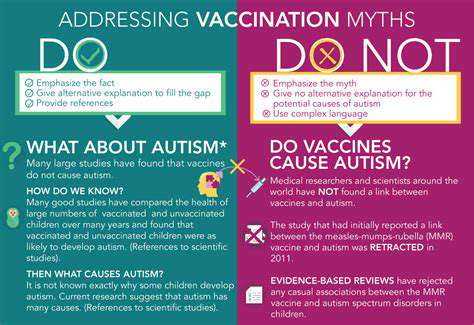Guide to Understanding Pet Vaccinations Explained
Deciphering the Importance of Core Vaccinations
Understanding the Role of Core Vaccinations
Core vaccinations stand as the frontline defense against severe, life-threatening diseases in pets. These inoculations target pathogens that threaten animals across breeds and lifestyles. Adhering to vaccination protocols isn’t just about individual health—it’s a community-wide safeguard. Without them, contagious illnesses could spread unchecked, endangering entire populations.
Vaccinated pets gain resilience against environmental hazards, ensuring lifelong vitality. This protection ripples outward, reducing outbreak risks and bolstering public health efforts. Imagine a park where every dog is shielded from parvovirus—that’s the power of collective vaccination.
Protecting Against Infectious Diseases
Core vaccines combat notorious threats like distemper, rabies, and adenovirus. These aren’t mild inconveniences; they’re brutal illnesses that hospitalize or kill. One delayed shot could leave a puppy defenseless against parvovirus, which has a 90% mortality rate in untreated cases. Vaccination isn’t optional—it’s a lifesaving ritual.
The Importance of Vaccination Schedules
Vets design vaccine timelines like precision blueprints. Miss a booster? Immunity cracks. A kitten’s initial series, for example, requires strict 3-4 week intervals to build proper defenses. Your vet tailors this schedule based on breed risks, local disease prevalence, and your pet’s health history. Those annual check-ups? They’re tune-ups for your pet’s immune system.
Building a Strong Immune System
Vaccines train the body’s defenses like military drills. They introduce harmless pathogen fragments, prompting antibody production. This biological memory means real infections get neutralized before symptoms appear. For senior pets with waning immunity, boosters act like reinforcements calling retired soldiers back to duty.
Maintaining Public Health
Rabies vaccines don’t just protect dogs—they prevent human fatalities. In the U.S., pet vaccination programs eliminated canine rabies variants by 2007. Every vaccinated pet is a brick in the herd immunity wall. When 70% of a population is immunized, outbreaks fizzle out before gaining momentum. Your pug’s shot could save the neighborhood’s strays.
Navigating Vaccination Schedules and Booster Shots
Understanding Core Vaccinations
Core vaccines are biological armor against fatal diseases. The DHPP shot for dogs, for instance, packs protection against four deadly viruses in one syringe. Vets stagger initial doses because young animals’ immune systems respond better to spaced challenges. That paperwork you get? It’s a passport for boarding facilities and international travel.
Navigating the Initial Vaccination Series
Puppies receive maternal antibodies that fade by 6-16 weeks—this is the critical vaccination window. Too early, and mom’s antibodies neutralize the vaccine; too late, and the pup enters the danger zone unprotected. The series isn’t redundant—each dose catches more of the litter as maternal protection wanes at different rates.
The Role of Booster Shots
Immunity isn’t forever. Rabies antibodies last 1-3 years depending on vaccine type. Booster shots aren’t just reminders—they’re software updates for the immune system. Newer vaccines like the 3-year canine distemper shot reduce clinic visits while maintaining protection.
Recognizing Vaccine Reactions
Mild lethargy post-vaccination shows the immune system is responding. Severe reactions (facial swelling, vomiting) occur in 1-2 cases per 10,000 doses—rarer than being struck by lightning. Benadryl can ease minor reactions, but always consult your vet. They might split combo vaccines or pre-treat with antihistamines for sensitive pets.
Considerations for Senior Pets
A 12-year-old dog might need leptospirosis vaccines annually but could skip Bordetella if not boarding. Geriatric pets benefit from titer testing—blood work that checks antibody levels before automatic boosters. It’s like checking your car’s oil before adding more. Vets balance disease exposure risks against aging immune systems.
Addressing Common Concerns About Pet Vaccinations

Pricing Concerns
Vaccine costs pale compared to emergency hospitalization. Parvovirus treatment averages $1,500—versus $30 for the preventive shot. Many clinics offer vaccine packages or low-cost shot clinics. Pet insurance often covers routine immunizations, turning a financial burden into predictable wellness care.
Performance Issues
Modern vaccines have efficacy rates exceeding 95% when properly administered. The lepto only lasts six months myth stems from older bacterin vaccines—new subunit versions provide year-long protection. Proper storage (no frozen or overheated vials) ensures maximum potency.
Compatibility Concerns
Core vaccines work across breeds, but timing varies. Giant breed puppies might start vaccines at 10 weeks instead of 6 to avoid interference with growth. Your vet adjusts protocols for pregnant pets, immunocompromised animals, or those with vaccine histories from shelters.
Over-Vaccination Fears
The American Animal Hospital Association now categorizes vaccines as Core, Non-Core, and Not Recommended. Rabies is legally required, but Lyme disease vaccines depend on geographic risk. This tailored approach prevents unnecessary shots while covering essential protections.
Natural Immunity Misconceptions
Surviving distemper doesn’t guarantee lifelong immunity—some dogs become carriers. Vaccination provides safer, more consistent protection than natural exposure roulette. Those who claim vaccines weaken immune systems ignore decades of epidemiological data showing vaccinated pets live longer.
Read more about Guide to Understanding Pet Vaccinations Explained
Hot Recommendations
- Review: [Specific Brand] Small Animal Cage
- Why Rescuing Pets Saves Lives
- Best Pet First Aid Kits [What to Include]
- How to Help Stray Animals in Your Community
- Guide to Adopting a Pet When You Have Kids
- Top Reptile Heat Lamps
- Heartwarming Rescue Stories That Will Inspire You
- Review: [Specific Brand] Bird Cage
- Best Aquarium Filters [2025 Review]
- Review: [Specific Brand] Smart Litter Box







![A Week in the Life of My [Pet's Name]](/static/images/33/2025-05/DinnertimeDelightsandEveningEntertainment.jpg)


